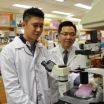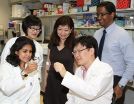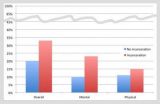(Press-News.org) In recent years, minimally invasive aesthetic injectable procedures have grown in popularity as more and more men and women are seeking age-defying treatments. As Botulinum toxin – generally known as BOTOX® – use has increased, a growing number of nonaesthetic health professionals have emerged to perform procedures utilizing this and other injectables. Kevin Small, MD and Henry M. Spinelli, MD from the Division of Plastic Surgery Presbyterian Hospital in New York and Kathleen M. Kelly, MD from Columbia University in New York have assessed the capability of various providers to administer cosmetic injections. According to their survey, plastic surgeons consider themselves the most capable injectors. The results of their study¹ appear in the official journal of ISAPS Aesthetic Plastic Surgery², published by Springer.
Since studies have shown that patients identify training as the most important factor when considering these procedures, this study seeks to summarize the perspective of plastic surgeons regarding these paradigm shifts.
In the summer of 2013, an online survey was sent to 26,113 plastic surgeons globally. Six questions assessed various healthcare practitioners' capability to administer BOTOX ®, fillers, and vaccines. Healthcare practitioners included plastic surgeons and dermatologists, gynecologists, dentists, nurses in plastic surgery and dermatology, or nurses in other fields.
Based on responses from over 880 plastic surgeons from around the world, plastic surgeons consider themselves and dermatologists the most capable injectors. However, they still believe nurses in other fields to be the most capable of administering vaccines.
"Since most of the growth in the field of cosmetic injectables is being driven by providers other than plastic surgeons and dermatologists, it appears that further clarification of training requirements and practice guidelines is necessary to ensure a consistent, reproducible, and safe experience for the patient," explained Dr. Henry Spinelli, primary investigator on this study.
These findings may provide a foundation to further investigate the relationship of patients and their injectable provider, especially in the setting of recent international press queries about regulations and standards for injectable practices. This preliminary study may initiate a substantive discussion concerning the role of various practitioners in an increasingly competitive injectables environment.
INFORMATION:References:
1. Small,K., Kelly, K.M., Spinelli, H.M. (2014). Are nurse injectors the new norm? Aesthetic Plastic Surgery. DOI 10.1007/s00266-014-0367-6
2. Aesthetic Plastic Surgery is the clinical publication of the International Society of Aesthetic Plastic Surgery (ISAPS), which co-owns the journal.
The full-text article is available to journalists on request.
Plastic surgeons or nurses: Who are the better injectors?
According to a study led by American scientists, plastic surgeons consider themselves the most capable injectors
2014-08-01
ELSE PRESS RELEASES FROM THIS DATE:
'Active' surfaces control what's on them
2014-08-01
CAMBRIDGE, Mass-- Researchers at MIT and in Saudi Arabia have developed a new way of making surfaces that can actively control how fluids or particles move across them. The work might enable new kinds of biomedical or microfluidic devices, or solar panels that could automatically clean themselves of dust and grit.
"Most surfaces are passive," says Kripa Varanasi, an associate professor of mechanical engineering at MIT, and senior author of a paper describing the new system in the journal Applied Physics Letters. "They rely on gravity, or other forces, to move fluids or ...
'Wetting' a battery's appetite for renewable energy storage
2014-08-01
RICHLAND, Wash. – Sun, wind and other renewable energy sources could make up a larger portion of the electricity America consumes if better batteries could be built to store the intermittent energy for cloudy, windless days. Now a new material could allow more utilities to store large amounts of renewable energy and make the nation's power system more reliable and resilient.
A paper published today in Nature Communications describes an electrode made of a liquid metal alloy that enables sodium-beta batteries to operate at significantly lower temperatures. The new electrode ...
NUS study shows effectiveness of common anti-malarial drug in controlling asthma
2014-08-01
Asthmatic patients may soon have a more effective way to control the condition, thanks to a new pharmacological discovery by researchers from the National University of Singapore (NUS).
The team, led by Associate Professor Fred Wong from the Department of Pharmacology at the NUS Yong Loo Lin School of Medicine, together with Dr Eugene Ho Wanxing, a recent PhD graduate from the Saw Swee Hock School of Public Health at NUS, discovered that artesunate, a common herbal-based anti-malarial drug, can be used to control asthma, with better treatment outcomes than other drugs ...
Preterm children do not have an increased risk for dyscalculia
2014-08-01
Preterm children do not suffer from dyscalculia more often than healthy full term children. Dr Julia Jäkel, a developmental psychologist from Bochum, and her colleague Prof Dr Dieter Wolke from the University of Warwick, UK proved this thesis to be true in their analyses – thus refuting previous scientific studies. Unlike other studies, the researchers took the children's IQ into consideration.
Dyscalculia in preterm children often impossible to diagnose
Preterm children often have cognitive deficits; they find solving complex tasks particularly difficult. However, ...
Scientists solve 2000-year-old mystery of the binding media in China's polychrome Terracotta Army
2014-08-01
Even as he conquered rival kingdoms to create the first united Chinese empire in 221 B.C., China's First Emperor Qin Shihuang ordered the building of a glorious underground palace complex, mirroring his imperial capital near present-day Xi'an, that would last for an eternity.
To protect his underworld palaces, the First Emperor issued instructions that his imperial guard be replicated, down to the finest details, in red-brown terracotta clay, poised to do battle. Thousands of these imperial guards were initially discovered in 1974; some contained patches of pigment that ...
Taking the guesswork out of cancer therapy
2014-08-01
Researchers and doctors at the Institute of Bioengineering and Nanotechnology (IBN), Singapore General Hospital (SGH) and National Cancer Centre Singapore (NCCS) have co-developed the first molecular test kit that can predict treatment and survival outcomes in kidney cancer patients. This breakthrough was recently reported in European Urology, the world's top urology journal.
According to IBN Executive Director Professor Jackie Y. Ying, "By combining our expertise in molecular diagnostics and cancer research, we have developed the first genetic test to help doctors prescribe ...
Georgia Tech jailbreaks iOS 7.1.2
2014-08-01
Security researchers at the Georgia Tech Information Security Center (GTISC) have discovered a way to jailbreak current generation Apple iOS devices (e.g., iPhones and iPads) running the latest iOS software.
The jailbreak, which enables circumvention of Apple's closed platform, was discovered by analyzing previously patched vulnerabilities with incomplete fixes.
It shows that quick workarounds mitigating only a subset of a multi-step attack leave these devices vulnerable to exploitation. Patching all vulnerabilities for a modern, complex software system (i.e., Windows ...
Symbiotic survival
2014-08-01
Boulder, Colo., USA – One of the most diverse families in the ocean today -- marine bivalve mollusks known as Lucinidae (or lucinids) -- originated more than 400 million years ago in the Silurian period, with adaptations and life habits like those of its modern members. This Geology study by Steven Stanley of the University of Hawaii, published online on 25 July 2014, tracks the remarkable evolutionary expansion of the lucinids through significant symbiotic relationships.
At is origin, the Lucinidae family remained at very low diversity until the rise of mangroves and ...
Companion planets can increase old worlds' chance at life
2014-08-01
Having a companion in old age is good for people — and, it turns out, might extend the chance for life on certain Earth-sized planets in the cosmos as well.
Planets cool as they age. Over time their molten cores solidify and inner heat-generating activity dwindles, becoming less able to keep the world habitable by regulating carbon dioxide to prevent runaway heating or cooling.
But astronomers at the University of Washington and the University of Arizona have found that for certain planets about the size of our own, the gravitational pull of an outer companion planet ...
Jailed family member increases risks for kids' adult health
2014-08-01
PROVIDENCE, R.I. [Brown University] — New research shows that people who grew up in a household where a member was incarcerated have a 16-percent greater risk of experiencing poor health quality than adults who did not have a family member sent to prison. The finding, which accounted for other forms of childhood adversity, suggests that the nation's high rate of imprisonment may be independently imparting enduring physical and mental health difficulties in some families.
"These people were children when this happened, and it was a significant disruptive event," said Annie ...
LAST 30 PRESS RELEASES:
Bluey’s dad offered professorial chair in archaeology at Griffith University
Beyond small data limitations: Transfer learning-enabled framework for predicting mechanical properties of aluminum matrix composites
Unveiling non-thermal catalytic origin of direct current-promoted catalysis for energy-efficient transformation of greenhouse gases to valuable chemicals
Chronic breathlessness emerging as a hidden strain on hospitals
Paleontologists find first fossil bee nests made inside fossil bones
These fossils were the perfect home for ancient baby bees
Not everyone reads the room the same. A new study examines why.
New research identifies linked energy, immune and vascular changes in ME/CFS
Concurrent frailty + depression likely boost dementia risk in older people
Living in substandard housing linked to kids’ missed schooling and poor grades
Little awareness of medical + psychological complexities of steroid cream withdrawal
Eight in 10 trusts caring for emergency department patients in corridors, finds BMJ investigation
NASA’s Webb telescope finds bizarre atmosphere on a lemon-shaped exoplanet
The gut bacteria that put the brakes on weight gain in mice
Exploring how patients feel about AI transcription
Category ‘6’ tropical cyclone hot spots are growing
Video: Drivers struggle to multitask when using dashboard touch screens, study finds
SLU research shows surge in alcohol-related liver disease driving ‘deaths of despair’
Rising heat reshapes how microbes break down microplastics, new review finds
Roots reveal a hidden carbon pathway in maize plants
Membrane magic: FAMU-FSU researchers repurpose fuel cells membranes for new applications
UN Member States pledge to increase access to diagnosis and inhaled medicines for the 480 million people living with COPD
Combination therapy shows potential to treat pediatric brain cancer ATRT
Study links seabird nesting to shark turf wars in Hawai‘i
Legal sports betting linked to sharp increases in violent crime, study finds
Breakthrough AI from NYUAD speeds up discovery of life-supporting microbes
New Eva Mayr-Stihl Foundation funding initiative boosts research at University of Freiburg on adaptation of forests to global change
The perfect plastic? Plant-based, fully saltwater degradable, zero microplastics
Bias in data may be blocking AI’s potential to combat antibiotic resistance
Article-level metrics would provide more recognition to most researchers than journal-level metrics
[Press-News.org] Plastic surgeons or nurses: Who are the better injectors?According to a study led by American scientists, plastic surgeons consider themselves the most capable injectors




